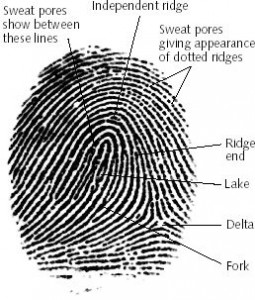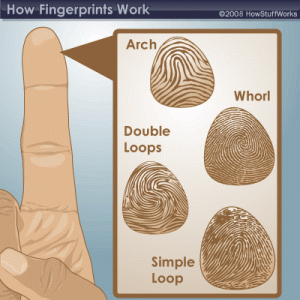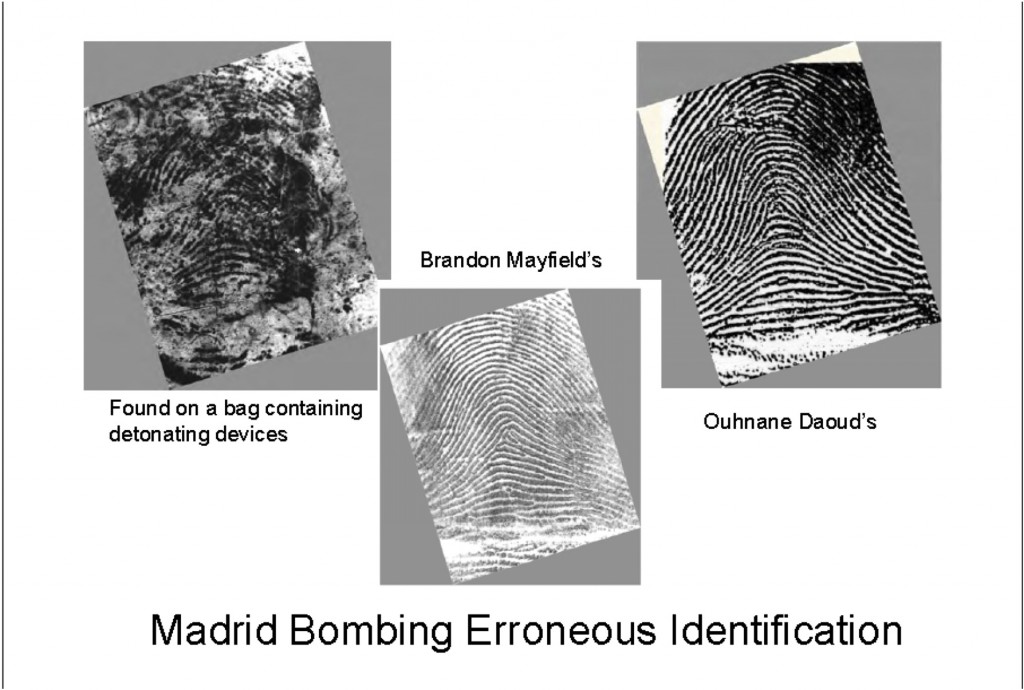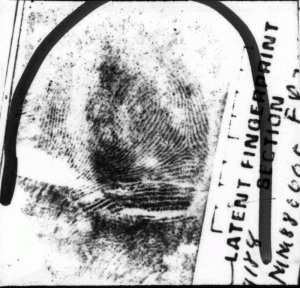Well, I suppose we should talk fingerprints, right?

FRICTION RIDGES
Ridges are the raised layers of skin which contain openings for sweat glands and impart characteristics to a fingerprint of an individual. One of the ways to identify a fingerprint is by using the Galton points system which includes the minutiae characteristics of the friction ridge such as the unique complex details of the ridge that divide, cross, and terminate. In the United States the general approach in examining a fingerprint is, analysis, comparison, evaluate, and verify (ACE-V). During this analysis there are three (3) levels: the first level is to look at the general characteristics of the print (loops, arches, and whorls), the second level is to look at the points where the ridge terminates or bifurcates, to see whether there are patterns of islands, or to determine whether there are dots and or forks, finally the third level consists of look for small patterns in the ridge width and contour and to consider pore distribution.

One of the largest criticisms of fingerprint analysis, however, is the production of errors due to the cognitive and psychological influences which affect how people perceive information and evaluate it in making and reaching a conclusion. This problem is typical and frequent in forensic evidence as a large amount of the examination is focused on subjective analysis.

Also, a large issue is the idea that a fingerprint is unique. This has not been validated.
Finally, of major note is that in the real world, the latent unknown print is frequently a blurry item without sufficient detail, is of poor resolution and is unlike the known that it is compared against, which is typically the 10 print card. The real issue is the applicability of this comparison: the known to the unknown. Does it really translate? Whereas the unknown is frequently smudged, smeared or given under conditions of unequal or non-uniform application of force on the surface that results in typically a poor resolution lift, the ten print card is more or less pristine, not smeared, is the product of uniform application of force on the card surface and is of better resolution.




One response to “Are fingerprints worthwhile?”